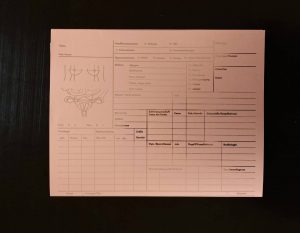Siberian Exiles 2
Freedom Fighters
Siberian Exiles is a trilogy about the deportations from the Baltic states to Siberia under the Soviet regime. In the three parts, eyewitnesses speak of the deportation of men, women and children to remote regions in Siberia, the Gulag camps, the partisan movement and the beginning of the Cold War. In this second part of the trilogy, I focus on the freedom fighters and the organized resistance against the Soviet occupation. In 1944, the Red Army advanced westward and drove the Germans out of the Baltic states. The atrocities committed by the Soviets during the first occupation were still fresh in people’s minds. They knew what the Soviets were capable of because of the mass deportations, arrests, and executions between 1940 and 1941. In the event of a reoccupation, a new wave of violence and repression was expected. Because of this, there was a strong willingness among the Baltic people to resist and fight for independence. World War II was underway, and the Russians mobilised Baltic men to fight for the Red Army. However, those men would rather fight against the Russians than with them. Many headed to the forests instead, and an armed partisan war against the Soviets ensued, which lasted from 1944 to 1956. The total number of partisans, including women, is estimated at over 50,000, comprising 30,000 Lithuanians, 10,000 Latvians and 10,000 to 15,000 Estonians. Each partisan had several local helpers, making the total number of people active in the resistance many times higher. The partisan movement could only work with the population’s help. People living close to the forests helped the partisans get food, medicine, bandages, and clothing. Others became informers, passing on important information or distributing the underground partisan newspaper. The partisans and liaisons were given code names to prevent them from betraying each other in the event of arrest. Besides the armed partisans, there were also many citizens, who wrote and distributed patriotic pamphlets encouraging the population not to surrender to the occupier. When the resistance started, the people believed the occupation would be short-lived and assumed the West and the United States would intervene and not leave the Baltic inhabitants to the Russians. However, the West took no action, and the Soviet Union’s annexation of the Baltic States remained until 1991. Between 2021 and 2022 I travelled through the Baltic States several times to delve into the archives, and to wander through the vast forests that had been a hiding place for many partisans for so long. And I met with elderly resistance fighters to record their impressive life stories. After the Russian invasion of Ukraine on 24 February, 2022 the interviews became more intense. Old wounds were reopened, fear, anger and fighting spirit resurfaced. It was repeatedly pointed out to me in the conversations that history is now repeating itself. Past and present seemed to merge. This book is dedicated to all freedom fighters, then and now. I offer my deep respect to everyone who fought and fights for independence, freedom and democracy. Claudia Heinermann
Bildautor*innen: Claudia Heinermann
Textautor*innen: Claudia Heinermann
Gestaltung: Sybren Kuiper
Herausgeber*innen: Claudia Heinermann
Verlag: Self-Publishing
ISBN: 978-90-814089-6-7



